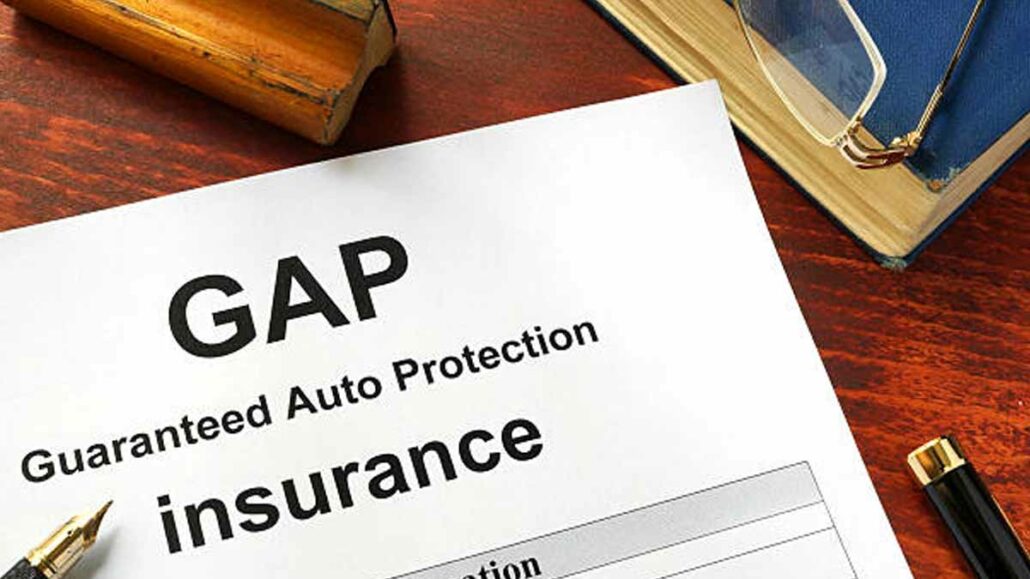How can i check if i have gap insurance? This guide provides easy ways to check your coverage. Learn where to look and what documents to review. Find out if you’re protected.

Understanding whether you have GAP insurance on your vehicle is critical for protecting yourself from unexpected financial loss in the event your car is totaled or stolen. GAP insurance, or Guaranteed Asset Protection, covers the difference between your vehicle’s actual cash value (ACV) and the amount you still owe on your auto loan or lease. If you’re unsure whether you have this coverage, this comprehensive guide will help you verify your policy and avoid costly surprises.
What Is GAP Insurance and Why Is It Important?
GAP insurance is an optional auto insurance coverage designed to protect car owners from paying out-of-pocket for a loan balance that exceeds the vehicle’s value. This situation typically arises when:
- A car is financed with a small or no down payment
- The vehicle depreciates quickly
- You’re in a long-term loan with small monthly payments
In such scenarios, if your car is declared a total loss, your regular comprehensive or collision insurance will only cover the car’s market value—not the outstanding loan. GAP insurance fills that “gap.”
How To Know If You Have GAP Insurance
Checking if you have GAP insurance requires looking at multiple sources of information, including your loan documents, insurance policy, and purchase agreements. Here are the most reliable steps:
1. Review Your Auto Loan or Lease Agreement
When you finance or lease a vehicle, many dealerships or lenders offer GAP insurance as part of the financing package. To confirm:
- Locate your loan or lease paperwork
- Look for a section labeled “GAP Waiver” or “GAP Coverage”
- Check for any fees associated with GAP insurance
- Confirm whether it was included automatically or if you opted in voluntarily
If your documentation includes any of these terms, it’s a strong indication that you already have GAP insurance.
2. Contact Your Auto Lender or Leasing Company
If your paperwork is unclear or missing, the next best step is to call your lender or leasing company directly. Ask:
- “Do I currently have GAP insurance on my account?”
- “Was GAP insurance included when I financed/leased the vehicle?”
- “Can you send me written confirmation of my GAP coverage?”
Make sure to get the details in writing, either through email or a mailed document, to have proof of coverage.
3. Review Your Auto Insurance Policy
While not all auto insurance companies offer GAP coverage, many do. If you purchased coverage through your insurer, it should be listed in your insurance declarations page. Here’s how to find out:
- Log in to your insurance account online
- Locate your “Declarations Page” or “Policy Summary”
- Look for terms like “Loan/Lease Payoff”, “Auto Loan Coverage”, or “GAP Coverage”
- Check the coverage amount and premium associated with GAP insurance
If you’re unsure how to navigate your insurance documents, contact your insurer’s customer service line and ask for assistance.
4. Check Your Car Purchase Paperwork
When purchasing a vehicle—especially from a dealership—you might have been offered GAP insurance as an add-on. The dealership’s finance office typically handles this. To verify:
- Find your vehicle purchase agreement
- Look for a section called “Optional Add-Ons”, “Aftermarket Products,” or “Protection Packages”
- Identify any charges or contracts labeled “GAP” or “Debt Cancellation Agreement”
If GAP insurance was included, it will appear as a separate line item with its associated cost.
5. Review Bank Statements or Payment Records
If you recall making a one-time payment or setting up monthly payments for GAP insurance, you can often find clues in your financial records:
- Search your bank statements or credit card records for any transactions labeled “GAP Insurance”
- Look for deductions from your auto loan provider that differ from your regular monthly payment
- Check for charges from a third-party insurance provider
This method is especially useful if you purchased GAP insurance independently or forgot about a dealership upsell.
6. Contact the Dealership Where You Bought the Vehicle
If you bought your car from a dealership and are unsure whether you opted for GAP insurance, call the dealership’s finance department. Ask them to:
- Check your purchase record
- Confirm if GAP coverage was added
- Send a copy of the GAP contract or a coverage summary
Dealerships often have this information on file for several years after the sale.
What Information Should You Look For?
When reviewing your documents or speaking with a representative, look for the following key details related to your GAP insurance:
- Explicit Mention of “GAP Insurance” or Similar Terms: This is the most obvious indicator.
- Premium Amount: If you see a separate charge or a line item with a specific cost associated with GAP insurance, it’s a strong sign you have it.
- Coverage Details: Understand the maximum amount the GAP insurance will cover and any specific terms or exclusions.
- Provider Information: Note the name of the company providing the GAP insurance and their contact information.
- Policy Number: Keep this number handy for future reference or claims.
Can I Add GAP Insurance If I Don’t Have It?
If you discover that you do not have GAP insurance, you may still be able to add it, depending on:
- Your loan balance
- The age of the vehicle
- The policies of your insurance company or lender
You can purchase GAP insurance from:
- Your auto insurance provider
- Your lender
- A third-party insurer
- The dealership, if within a certain time frame
Typically, GAP insurance must be added within the first 12 to 36 months of owning the vehicle, or while you still owe more than the car is worth.
How Much Does GAP Insurance Cost?
The cost of GAP insurance varies by provider and policy structure:
- Through a dealership: Typically a one-time fee between $400–$700
- Through your auto insurer: Added to your premium, usually costing $20–$40 per year
- Through a lender or bank: May be included in your loan payments
Always compare options, as dealership prices are often higher than those from an insurance company.
Signs That You Need GAP Insurance
Even if you haven’t opted in yet, consider GAP insurance if:
- You made a down payment of less than 20%
- You’re in a loan term longer than 60 months
- You’ve rolled over negative equity from a previous vehicle
- Your car has high depreciation, such as luxury or electric models
These factors increase the chance that you’ll owe more than the car’s value, putting you at financial risk in a total loss.
Frequently Asked Questions (FAQs) About Checking for GAP Insurance
Where is the best place to initially look for proof of GAP insurance?
Your vehicle financing documents, specifically your loan or lease agreement, are usually the most reliable initial source of information.
Can I check if I have GAP insurance online?
While some insurance providers and lenders may offer policy information online, it’s often best to review your physical documents or contact them directly for confirmation.
What if I purchased my car with cash? Do I need GAP insurance?
No, GAP insurance is specifically designed to cover the difference between your vehicle’s value and the outstanding balance on a loan or lease. If you own your car outright, there is no loan or lease to worry about.
I don’t remember purchasing GAP insurance, but I see a charge on my monthly loan statement. What should I do?
Contact your lender immediately to inquire about the charge. They can explain what it covers and provide you with the relevant policy information.
Can I add GAP insurance after purchasing my vehicle?
Yes, in many cases, you can purchase GAP insurance after buying your car. You can typically obtain it through your auto insurance provider, lender, or a third-party insurer. However, it’s often more cost-effective to purchase it at the time of vehicle purchase.
What information will I need to provide when contacting my insurance company or lender to check for GAP insurance?
Be prepared to provide your full name, vehicle identification number (VIN), and policy or account number.
Is GAP insurance the same as full coverage auto insurance?
No, full coverage auto insurance typically includes liability, collision, and comprehensive coverage, which protect against damage to your vehicle and injuries to others. GAP insurance is a separate type of coverage that specifically addresses the “gap” between your vehicle’s value and your loan/lease balance.
Final Thoughts
Understanding whether you have GAP insurance is vital to avoid paying thousands out of pocket if your car is totalled. By reviewing your loan, insurance policy, and dealership documents, or contacting your providers directly, you can confidently determine your coverage status and take action if necessary.
If you’re unsure, act quickly—especially if your car is new or financed. GAP insurance provides peace of mind, ensuring you’re protected from owing money on a vehicle you no longer have.

